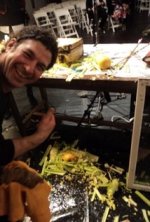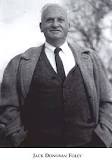We are currently researching the recording of sound, and the creative uses of such. The practice of using recorded sounds to make music, either original compositions or covers of existing songs, have led us to the practitioner Andrew Huang. This musician uses various sounds recorded from random objects to make music.

Huang has a website, and also distributes mainly through a YouTube channel. He performs original music (such as “Musical Chairs” (1)) as well as covers of popular music (“Hits of 2014 – played with household objects” (2)) on a variety of objects, sometimes thematic; the “Chairs” song was performed entirely with chairs, and a “Breaking Bad” cover was made with equipment found in a meth lab. The audio is of good quality, and the sounds are recognizable in the covers. Huang is also a director.
A foley artist is the sound designer responsible for incidental and background sounds for a film of game. An example of a foley artist for film is Skip Lievsay, based in New York and supplier of sounds to the Coen Brothers and Martin Scorsese, with examples such as No Country for Old Men to his name.
Lievsay has worked on several well known films, such as No Country for Old Men, as mentioned, Fargo, The Big Lebowski and more recently the Hunger Games series of films and Gravity. The sounds he uses, as mentioned in this (3) article, are often not what they sound like; cooking bacon is used for rain, and the sound of a roaring lion is mixed with car engines to make cars feel more powerful. A point raised in the article is that audiences hear what they are conditioned to hear rather than what is recorded; a tape recorder sound is unusable in a Miles Davis biopic because it sounds too much like science-fiction spacecraft, because foley artists on science-fiction probably used tape decks to make a spaceship noise.
Lievsay is a high profile example of a foley artist. He is reportedly the only foley artist the Coen brothers will use, and has won two Academy Awards for work on No Country for Old Men.
 John Roesch is another highly regarded foley artist, who works for both film and computer games. He is the lead foley artist for Warner Bros. Studios. Roesch worked on numerous high profile motion pictures, such as “Who Framed Roger Rabbit” and “The Abyss”, as well as video games such as “Dead Space” and “Final Fantasy X”.
John Roesch is another highly regarded foley artist, who works for both film and computer games. He is the lead foley artist for Warner Bros. Studios. Roesch worked on numerous high profile motion pictures, such as “Who Framed Roger Rabbit” and “The Abyss”, as well as video games such as “Dead Space” and “Final Fantasy X”.
Roesch was initially to be an actor, before he ended up working on sound for a live show as a favor for another acting student. He was asked to work on foley sound for another project, found that he liked it, and was recommended for a job by the director who had liked his work. Roesch made an offhand mention of his job to his landlady; she happened to be another foley artist, Joan Rowe, and informed Roesch of a new vacancy at her workplace. He took it, and eventually moved on to Warner Bros.: He eventually became the head of foley sound at Warner Bros. (4)
Leslie Bloome is a foley artist who works primarily for television. He started work in foley sound in 1991, on The Last Harvest, has 327 credits listed on IMDB and includes high profile shows like Babylon 5 in his portfolio.
 Bloome has started a studio based in New York,
Bloome has started a studio based in New York,  Alchemy Sound (5), that creates foley sounds. This studio has work for several current TV shows and Internet exclusive content, such as Making a Murderer for Netflix and Quantico for ABC. Alchemy Sound has also expanded to providing foley sounds for live productions and the sound for live events. They also provide the foley sounds for the recent video game Just Cause 3.
Alchemy Sound (5), that creates foley sounds. This studio has work for several current TV shows and Internet exclusive content, such as Making a Murderer for Netflix and Quantico for ABC. Alchemy Sound has also expanded to providing foley sounds for live productions and the sound for live events. They also provide the foley sounds for the recent video game Just Cause 3.
Bloome himself has received a nomination for an Emmy for his work on film, and provides sound for numerous theatrical productions, notably the Brooklyn Academy of Music production of This American Life.
No initial discussion of foley art would be complete without mentioning Jack Foley himself. Foley was the originator of the techniques mentioned in this article, working on the earliest sound films.
 Foley was originally a hardware store owner on the outskirts of Los Angeles, until the land was sold to the city for water rights. Foley was able to convince the new movie industry that his town would be perfect for filming westerns. He then found work on sound films, developing the art of foley sound. He worked on film like “Melody of Love” in 1928 and “Show Boat” in 1929. He received several awards for his work. Foley died in 1967. Foley was rarely credited in his films, as was the practice at the time; instead, generations have immortalized his name in the name of his art.
Foley was originally a hardware store owner on the outskirts of Los Angeles, until the land was sold to the city for water rights. Foley was able to convince the new movie industry that his town would be perfect for filming westerns. He then found work on sound films, developing the art of foley sound. He worked on film like “Melody of Love” in 1928 and “Show Boat” in 1929. He received several awards for his work. Foley died in 1967. Foley was rarely credited in his films, as was the practice at the time; instead, generations have immortalized his name in the name of his art.
The techniques used by these artists, such as Jack Foley, could potentially be of use to us, in order to make future film projects sound more like real films. The sounds that are used are there because the sounds recorded on set are not enough; despite being real, it does not seem real to the audience due to the foley sounds used in films in the past. Many sounds are also not loud enough to hear on the original soundtrack. The sounds can also be used to draw attention to various things in the film, such as a discarded weapon: foley art carries power. Using it in film based projects in the future will make the projects more engaging to the audience. I can use the same methods as used by John Roesch and the other artists shown to make the sounds.

